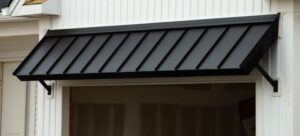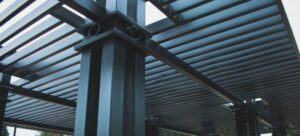1. Introduction
Both disc lights and can lights have gained popularity in modern interior design due to their sleek and unobtrusive appearance. However, they differ in terms of installation, light distribution, and design flexibility.
2. What are Disc Lights?
Disc lights, also known as slim panel lights, are ultra-thin LED fixtures that provide a seamless and contemporary look to any space. They are often used for ambient lighting and can be recessed into ceilings or walls. Disc lights emit a soft, even glow that adds a touch of elegance to your room.
3. What are Can Lights?
Can lights, or recessed lights, are fixtures that are installed into the ceiling, resembling a can or a pot. They come in various sizes and can be adjusted to direct light in specific directions. Can lights offer focused illumination, making them ideal for task lighting or highlighting specific features in a room.

4. Brightness and Light Distribution
Disc lights offer a uniform distribution of light, spreading brightness evenly across the room. On the other hand, can lights can be adjusted to focus light on a particular area, making them versatile for various lighting needs.
5. Installation Process
Installing disc lights involves creating a small opening in the ceiling and attaching the slim panel. Can lights require a larger hole for the housing and wiring. Therefore, if you’re looking for easy installation, disc lights might be the preferred choice.
6. Space Requirements
Disc lights are an excellent option for rooms with limited ceiling space due to their thin profile. Can lights require more ceiling depth, so they are better suited for spaces with ample overhead room.
7. Energy Efficiency
Both disc lights and can lights offer energy-efficient LED options that consume less power while providing ample illumination. However, due to their uniform light distribution, disc lights might be slightly more efficient in terms of overall coverage.
8. Design and Aesthetics
Disc lights contribute to a modern and minimalist aesthetic, seamlessly blending into the ceiling. Can lights, while discreet, have a more traditional appearance and are often chosen for their directional lighting capabilities.
9. Dimming Capabilities
Most disc lights come with dimming capabilities, allowing you to adjust the light intensity according to your preference. While many can lights also offer dimming, the range and compatibility might vary.
10. Cost Comparison
In general, disc lights tend to be more affordable due to their simpler installation process. Can lights may incur higher costs due to the additional wiring and housing requirements.
11. Maintenance and Lifespan
Both disc lights and can lights have a long lifespan, with LED technology ensuring durability. However, can lights might require more maintenance as they are exposed and susceptible to dust accumulation.
12. Choosing Based on Room Type
For ambient lighting in living rooms or bedrooms, disc lights can create a serene atmosphere. Can lights are better suited for task lighting in kitchens or offices, where focused illumination is essential.
13. Finding the Perfect Balance
In some scenarios, a combination of both disc lights and can lights can provide the best of both worlds. This can enable you to achieve an optimal balance between ambient and task lighting.
14. Conclusion
In the debate of disc lights vs. can lights, there’s no one-size-fits-all answer. Your choice depends on the specific requirements of your space and the atmosphere you wish to create. Take into consideration factors like installation ease, aesthetics, energy efficiency, and lighting needs to make an informed decision.
15. Frequently Asked Questions (FAQs)
Q1: Can I install disc lights and can lights in the same room?
Yes, combining both types of lights can offer a balanced lighting scheme that suits various purposes.
Q2: Are disc lights suitable for high ceilings?
Absolutely, disc lights are a great choice for high ceilings due to their even light distribution.
Q3: Can I use dimmer switches with both disc lights and can lights?
Yes, most models of both types of lights are compatible with dimmer switches for adjustable lighting.
Q4: Do disc lights generate a lot of heat?
No, disc lights are designed to produce minimal heat, making them safe and energy-efficient.
Q5: Are can lights suitable for outdoor use?
Can lights designed for outdoor use can be installed in covered outdoor spaces.



